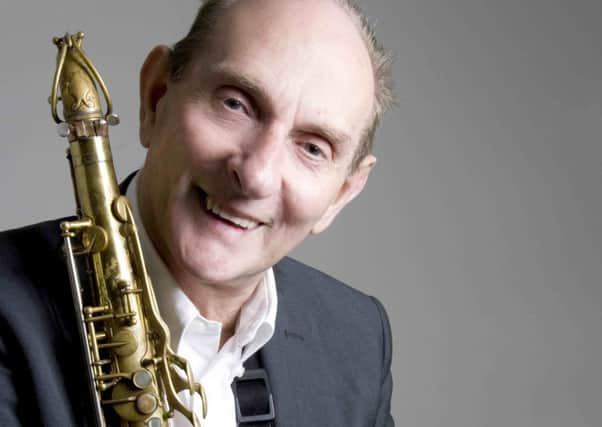Obituary: Bobby Wellins, saxophonist who played alongside some of the greats of British jazz


Bobby Wellins was a tenor saxophonist raised in Glasgow whose career spanned over half a century, from beginnings as a be-bop loving student of music in the Gorbals to a performing career which carried on into the 21st century and saw him play alongside some of the greats of British jazz. None of these relationships was greater, however, than the one he enjoyed with the London-born pianist and composer Stan Tracey; both players’ reputations rested upon their work on Tracy’s 1965 recorded suite Under Milk Wood, which is often cited as the greatest-ever British jazz album.
That Wellins was a survivor in the industry is emphasised through the fact that his career was interrupted by a decade-long period of addiction and depression brought on, he later said, by his insecurity as a player and the pressure of pursuing excellence.
Advertisement
Hide AdAdvertisement
Hide Ad“The downhill slope… almost broke up my family,” he told Jazz Journal in 1990, referring to his heroin and cocaine use. “My wife Isobel helped me to break free. I got off in 1975, I was 40 years old and finished with it. The affair was over.”
Although undoubtedly a black time personally and professionally for Wellins, this period cast him (alongside Tracy, who also succumbed) as a resilient, enduring great on the British jazz scene. Where Wellins played in the Palais bands of Glasgow and the jazz groups of London throughout the 1950s and early 1960s, alongside bandleaders like Johnny Dankworth, Vic Lewis, Tony Crombie and Tracy, the period following his recovery was spent developing an impressive recorded legacy, as well as playing live once again.
Wellins’ highpoints as a recording artist emerged in the mid-1960s, first with his own Culloden Moor Suite in 1964, which was inspired by reading the historian John Prebble’s account of the battle in 1961.
Composed for a 14-piece orchestra which included Tracy, Wellins’ first full-length composition was recorded once more by the Scottish National Jazz Orchestra under Tommy Smith in 2011.
The following year, Under Milk Wood arrived; inspired by the BBC radio play of Dylan Thomas’s work from 1953, the recording featured Tracy, Wellins, bassist Jeff Clyne and drummer Jackie Dougan, and was fully titled Jazz Suite Inspired by Dylan Thomas’s Under Milk Wood.
Wellins’ tender, Celtic-influenced solo on ‘Starless and Bible Black’ is for many the high point of his career, and in some opinions the highlight of the record and a contender for the best recorded solo by a British jazz player. It certainly cemented Wellins’ position as one of the country’s great saxophonists.
Following his return to playing in 1975, Wellins formed his own quartet, with whom he regularly recorded well into the 2000s, under various incarnations. His records included 1982’s Spectrum project, alongside Tracy, Kenny Wheeler and others; the 1992 Nomad, alongside the jazz singer Claire Martin; 1998’s Comme D’habitude, once more with Tracy; and 2010’s Time Gentlemen Please. 1979’s Dreams Are Free also provided the title of Gary Barber’s 2012 documentary film about Wellins’ life and work.
Born Robert Coull Wellins in Glasgow on 24 January 1936, Wellins was the son of a musical family. His father Max – a Jewish immigrant from Minsk of joint Polish and Russian descent – was a saxophonist, clarinettist and later flautist, while his mother Sally was a singer. The pair played in cinema bands and around Scotland as a duo, and they had designs on moving down to London together to make it, but the outbreak of the Second World War stopped that.
Advertisement
Hide AdAdvertisement
Hide AdDuring this time Wellins was evacuated from the city to stay with relatives in Montrose, where his mother grew up in a fishing family, and it was a place he retained fond childhood memories of.
Away from his playing in the evening, Wellins’ father was a furniture upholsterer and, following his retirement with respiratory problems, a watchmaker. His wish was that his son would apprentice in the craft, but the lessons he had given young Bobby in music from the age of 12 in alto saxophone and piano had fired a passion in the boy.
Particularly inspired by the bebop style of Charlie Parker and Dizzy Gillespie, Wellins moved to England to study keyboard harmony at Chichester College of Further Education, and after that clarinet at the RAF School of Music in Uxbridge; yet his time at the latter was cut short by what he later described as an agoraphobic breakdown, and he returned home to Glasgow.
Now playing the tenor saxophone, the instrument on which he made his name, Wellins played in Palais bands around his home city, then finally made the move to London at the insistence of a friend who secured him a regular club gig and a ticket down south, an opportunity that Wellins knew he couldn’t pass up.
He played for bandleaders including Malcolm Mitchell, Eric Winstone, Johnny Dankworth and Vic Lewis, and – with the latter - on a cruise liner trip to New York, during which he met and befriended Count Basie’s saxophonist Lester ‘Prez’ Young.
In 1956 Wellins joined racing driver turned saxophonist and bandleader Buddy Featherstonhaugh’s quintet, alongside the trumpeter Kenny Wheeler, and was involved in his first recording with the same band. Around this time Wellins befriended the iconic club owner Ronnie Scott and began playing in a short-lived group called Jazz Inc, led by the drummer Tony Crombie. One of the other players in the group was Tracy, their friendship enduring until Tracy’s death in 2013.
Living in Bognor Regis in the final years of his life, Bobby Wellins occasionally played at the local Steyning and Chichester Jazz Clubs, and also taught jazz at Chichester College. He died after a period of illness, and is survived by his wife Isobel and two daughters.
DAVID POLLOCK